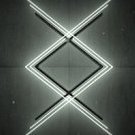Leaderboard
Popular Content
Showing content with the highest reputation on 06/11/2014 in all areas
-

An ad shot on lomo anamorphics
yannis.zach and 2 others reacted to Russell Anway for a topic
Hello, There are far too many tests shot with our anamorphics and far too little work! And in that spirit I shot a couple narrative bits with my Lomos in the last couple weeks. I shot this with my 35mm and 80mm Mostly with the 35mm. The 35mm is an OCT 18 so I also mounted it with a 24mm and a 50mm at times. Opening shot is 24mm, shots on suspension bridge are 50mm. Shot on a gh1 (frowny face) and had an arri 650. I also wrote it and directed it. First time I've done an ad like this or shot something significant with these lenses. I used Schneider 4x4 ND's, a tiffen polarizer, and a tiffen +1.5 diopter (closeups to throw that background out of focus). It's an ad for a new app coming out Saturday. It uses iPhone gps data, and other ambient factors like time/temp to access original artistic content. So it's a bit like a gallery/scavenger hunt on your phone. Only available in Minneapolis to at launch. I also recently shot a short I will hopefully post here when I make sure it won't cause any problems with upcoming festival commitments. Thanks and let me know what you think!3 points -

DSLR vs camcorder for video?
Daniel Acuña and one other reacted to varicam for a topic
Do you have a smartphone with a decent camera? That might work too.2 points -

The Diopter Thread.
NAL reacted to Tito Ferradans for a topic
In the end, we never stop talking about these suckers across multiple threads, so I'm gonna try to compile as much information as I can into this one. As in most cases, diopters are cheaper than anamorphics, I ended up with a lot of them, from multiple brands and multiple performances. The key was never go where everyone else is trying to find. Got the classics too, but that was luck. Anyway, let's go to the undeniable favorite: Tokina +0.4 Achromatic diopter. My only complain about it is: why aren't you bigger?! My first lens was the LA7200 and I took quite a while to find the 105mm. The next lenses all had different thread sizes. I could filter the Hypergonar on 77mm or 86mm, the Kowa with 72mm, Sankor 72mm too, Isco 54 at 95mm or 86mm and had a plan of an alternative 86mm front for the Lomo Squarefront, which didn't go through. Anyway, if I started to look for all these sizes of diopters, I'd go broke. My salvation were the Series 9 filters. If someone isn't familiar with these, they come as unthreaded glass, that you put into an adapter that can range between 67mm and 86mm. That pretty much covers all lenses. I got adapters for 72, 77 and 86. The glass itself has around 83mm diameter. Tiffen Series 9 filters are not in production anymore, so you can pick them off cheap ($1-10), even though they're not so common. The adapters are a bit harder to find. After that, I went crazy on other brands as they showed up with decent sizes. Got 77mm Spiratones +0.5 and +0.25 for $6, 86mm +0.6 Fujinon, 72mm +1.25 Fujinon, 95mm +0.25 Pentax (for the 135-600mm Pentax Zoom), 82mm +0.75 Canon (1300H), etc, all very cheap. Some of them are real heavy, and I don't know if they're achromatics or single elements. The advantage of the bigger ones is, less vignetting, even when you go wide, and, the sharpness is increased, since you don't get corner areas. Finally, I found a couple 4.5" ones (around 114mm), that require special adapters, like Series 9. These adapters are impossible to find! I'm making a couple myself, as I trust threads more than tape. :P EDIT Dec 07, 2014 Why Look for Low Powered Diopters There's a common question going around, of WHY fraction diopters are better than full numbers, so I'm addressing that here too. Rich has a good explanation too >here. As you can see below in the math section, the numbers correspond to certain maximum and minimum focus distances. When it comes to anamorphic lenses, what is the most common minimum focus distance? Something between 1.5m and 2m (or 5 to 7 feet, imperial scale). Iscoramas have 2m minimum focus. Kowas, Sankors and most dual focus projector lenses are set to 1.5m minimum focus. For most shots, this distance is greater than the distance you want to put between the camera and your subject, which leads to being unable to focus properly - also, it's a pretty messed up distance for working indoors. What a +0.4 or +0.5 diopter does is turn this "near 2m minimum focus distance" into "near 2m MAXIMUM focus distance" (see math below, seriously), allowing you to frame and shoot freely indoors and much closer to your subjects. If you want extreme close ups, then you need to have stronger diopters, but a +0.5 is a key tool for "standard" shots. Achromats are also better, but they have their own explanation below too. Focus and Anamorphic Compression Another thing that relates directly to diopters is the lens compression. Most of our 1.5x or 2x stretch lenses only have that proportion when focused to infinity. Things change when you twist the focus ring. As you get closer to minimum focus, the less compression you have. 2x lenses tend to go towards 1.7x or 1.8x, Iscoramas get very close to 1.3x. When unsqueezing your footage, this compression disparity can make shots look different from the rest of the footage, as if it was shot with a different lens. In a technical level, it really was a different optical path. Using diopters you get rid of using the shorter distances on your focus ring and keep your compression constant throughout the shots. DISCLAIMER: I don't know how this relates to baby anamorphics, and this CERTAINLY does not affect focus through lenses since you don't change the distance between the anamorphic elements. //EDIT. Strength measuring: Fujinon: The first number is their maximum focus distance, the second number is the thread size. For example, a 16086 reaches 160cm at infinity (+0.6) and has 86mm thread. 190101, 190cm at infinity focus, 101mm thread. Canon: The newest series (250D and 500D) measures in millimeters their maximum distance. 250mm equals +4 and 500mm equals +2. The "D" stands for Double element. The older ones use the same measuring, 1300H = 1300mm, +0.75. There's also a 900H, 105mm, which is a like +1.1. When nothing is marked on it, good luck with testing the thing. It's usually not hard, but most of them have information lying around the web. Thread size: As well as regular threads, some are marked with a C after the number (mostly 86C, 95C and 105C), that means the thread on this filter is coarse, 1mm pitch. Our regular (fine) threads have .75mm pitch. There are adapters for these too, like the one below, from 86mm fine to 86C. http://www.ebay.com/itm/350325079425 Minimum and Maximum focus distance: Just realized that I haven't explained the math relating diopter strength and maximum focus range! Since most anamorphics perform better when focused closer to infinity, a diopter gives great help in "faking" it optically. A close up filter "sets" infinity just a couple meters/feet away, so anything BEYOND that certain point will be IMPOSSIBLE to focus. Of course, this will NOT follow the lens' focus marks. Infinity on the lens now equals the diopter maximum focus distance. Now, the numbers: S = diopter strength (+0.5, +0.6, +1, +2, etc) MaxFm = maximum focus distânce, measured here in METERS MaxFm = 1 / (S) Ha! I bet you expected something waaaay more complex, right? Some examples are never bad, so let's get to it. I'll use +0.5, +1.25 and +2 as sample strengths. MaxFm = 1/(0.5) = 1/(1/2) = 1 x 2/1 = 2 meters MaxFm = 1/(1.25) = 1/(5/4) = 1 x 4/5 = 0.8 meters MaxFm = 1/(2) = 1/2 = 0.5 meters If you live in a country where imperial scale prevails over the metric system, you just gotta do a quick fix to the expression. S = diopter strength (+0.5, +0.6, +1, +2, etc) MaxFf = maximum focus distânce, measured here in FEET MaxFf = (3.3 / S) Same examples from above, now in feet MaxFf = 3.3/(0.5) = 1/(1/2) = 3.3 x 2/1 = 6.6 feet MaxFf = 3.3/(1.25) = 1/(5/4) = 3.3 x 4/5 = 2.6 feet MaxFf = 3.3/(2) = 3.3/2 = 1.6 feet Regarding minimum focus distance, I'd say anything closer than half maximum focus distance is gonna look pretty bad already. With high power close ups (+2 and up), I'd say anything closer than 3/4 of your maximum focus distance is gonna be pretty bad already. Of course, this "minimum focus distance" image quality has A LOT of influence from the anamorphic. Also, achromatic diopters will improve almost everything you could imagine. Since I've just mentioned them, here's a list of achromatic diopters, with their strength, manufacturer, price range, etc. http://fuzzcraft.com/achromats.html Price range: Just for checking, here is a list of the most common lenses and their outgoing price. Tokina +0.5 72mm - $150 Kenko +0.5 72mm - $90 Tokina +0.4 72mm Achromatic - $350 Kenko +0.3 105mm - $350 Canon +2 72mm Achromatic - $100 Sigma +1.6 62mm Achromatic - $20 Angenieux +0.25 82mm - $330 Kinoptik +1 82mm Achromatic - $530 Foton-A +1 or +1.25 - $900 (GONE!) Tiffen +0.5 to +2 138mm - $50 and up Tiffen +0.5 to +5 Series 9 - $1-50 Tiffen/Kodak Series 9 Adapters - $20-40 Tiffen +0.5 to +2 4.5" - $10-50 (RARE)1 point -
Edge of Tomorrow
AaronChicago reacted to FilmMan for a topic
Aaron, I took the family to the movie yesterday. I thought it was a very good movie too. I'm not a big fan of 3d but it delivered. The pacing and story kept my interest. Being shot on film, the look had a more dirty, organic texture than most of the digitally shot movies (Or it could have been my 3d glasses being dirty from me handling them with my greasy, 'popcorned' hands). The acting, special effects, editing, etc. were all well done. A sensible 8.2/10 rating on imdb. Cheers.1 point -

So where does this leave the BMCC?
andrgl reacted to Ben Prater for a topic
The BMCC still has one of the most beautiful images available short of an Alexa. The 13-stops of DR is gorgeous, the oversampling results in a crisp image, you have RAW when you want loads of flexibility. If I'm on a budget: indy films or music vidz, I would want a BMCC. If I am doing corporate video on a budget, I'd want the GH4.1 point -
The FZ1000 is also coming with a 1" sensor and 4K video. It looks like Panasonic will be pushing 4k across the whole line this year. http://www.43rumors.com/ft5-first-image-of-the-superzoom-and-1-inch-sensor-panasonic-fz1000/1 point
-
If you go to gearslutz.com, you can find posts about the H6 lasting a few hours with phantom power on. Of course, how long it lasts depends on the microphone. Most mics that are built for DSLR use should sip power at a reasonable rate.1 point
-

Comparison between the "Venerable Master" and the GH4
Lasers_pew_pew_pew reacted to Andrew Reid for a topic
So back on topic Michael...1 point -
Panasonic GH4 footage shot with the EOSHD Shooter's Guide Cinema Settings
Andrew Reid reacted to hellboy80 for a topic
If you need an empty city for a postapocalyptic movie, you can do this with this camera at night :) Great footage.1 point -
Example of flat footage from A6000,neutral creative style -3 -3 -3. Footage is straight from camera. frame rate-24P creative style-neutral -3 -3 -3 shutter-50 iso-100 filter-neewer variable nd glass-sony 35mm 1.8 OSS editor-Vegas Pro 12 Download footage re-wrapped in DNxHD MOV. files. we.tl/MUqMeZDdQO1 point
-
https://vimeo.com/97877583 Just a test with Neutral Creative Style. I tested DRO at Level 5 and on OFF to see how it would impact the image. I can't say I see a real big difference if any at all,at least in this shooting scenario. frame rate-24P creative style-neutral shutter-50 iso-100 post-curves,color corrector,saturation eq filter-neewer variable nd glass-sony 35mm 1.8 OSS editor-Vegas Pro 12 Download footage straight from camera re-wrapped in DNxHD MOV. files. we.tl/hpFXN2C0pO1 point
-
The GH4 B&H Webcast
Michael Thames reacted to Inazuma for a topic
From the bullet points OP made, it doesnt sound like there was any new info from that webcast except that Panasonic acknowledge the audio issue as a hardware problem. @Michael: The thing is that I have not noticed as much love for the GH4 as you seem to have. Not that I love it either (pretty happy with what I have already). Every clip of the GH4 posted is met with quite a lot of criticism either about the sharpness, dynamic range, low light performance and/or colour. And then there's people like me who have shot with these Panasonic cameras and know their potential, so I do get a little frustrated at the backlash but meh, I cant change opinions so why bother caring so much? What I will agree with is that there are too many fucking GH4 threads. And that includes this one,1 point -

Edge of Tomorrow
Shane Essary reacted to AaronChicago for a topic
This movie looked like another POS summer blockbuster after seeing the trailer. Once I saw 93% on rotten tomatoes it got me interested. It ended up being one of the best movies Ive seen this year.1 point -

Comparison between the "Venerable Master" and the GH4
sanveer reacted to Michael Thames for a topic
I sorry you had to defend yourself, I didn't mean for you to work so hard! I see so many rather pointless videos on Vimeo of cameras on sliders with guys playing with the follow focus etc. and I wonder what's the point? To show off their new camera? Perhaps a calling card to potential clients? Just got Final Cut X with all those lovely video effects...... I know just how tempting it can be to double click to load the effect..... but I can't bring myself to do it. There was an interesting video I saw on youtube of a guy who saved a whale caught in fishing net, filmed on a cheap camcorder by his girlfriend. I find these type videos infinitely more interesting than 3 minutes of blue colored waves, or flowers going in and out of focus. As they say content is KING! I guess my interests lay more around content than technique at this point in my life, perhaps it will change and I am trying to learn about video as much as I can, that's why I joined the GH4OS forum here, i try to remain open minded. Between Crackpot (you) and Buzzkill (Andrew) constantly crashing my threads and causing them to close..... looks like eventually I will have to seek knowledge elsewhere soon. There are soooooo many video forums these days. I don't make my living doing video, and my identity is quite solid and grounded in my artistic accomplishments out side of the video world that when you start nipping at my heels, I just laugh and say........ if you only knew. After shooting a video of Bach live yesterday and having to deal with studio quality audio as well as the video, which perhaps comes second nature to such an accomplished videographer as yourself, I find to be quite challenging and difficult...... I say to myself damn, why do I get myself involved in these projects, when I could be out on the beach filming waves, and flowers going in and out of focus. I shall post my video here (if I'm still around) for you to judge and tear apart at your pleasure. The topic of art came up in my conversation with someone with whom I consider a great accomplished artist (picked by Segovia himself as one of the greatest living classical guitarists alive today), over the topic of video, or I should say film. I said, I don't consider video as art, in the way of other art forms there is a minimal amount of technique involved, and the more money you have the greater your accomplishments are in the realm of film, during our conversation he somewhat set me straight and I came away thinking film is art, or lets say can be art, and I was thankful for that.1 point -

Will Canon EVER respond to competitors?
Christina Ava reacted to jgharding for a topic
I'd love to share this optimism, but every single time a Sony camera is announced it looks like the best thing ever... on paper. Yes a 4K sensor can make amazing 1080, like in the Cxxx series.... but will it? With most of their products, when they're in our hands all the flaws and intentionally reduced features come to the fore. They just don't seem to make as 'complete' products as Canon. There are good paper features, but something lets them down... I'm not cynical, I'm just sceptical. or after so many years, perhaps realistic :S The lack of ND filters is annoying too.1 point -
SLRMagic 1.33x lens tutorial video
nahua reacted to Andrew - SLR Magic for a topic
We will have a casual meet-up in NYC on June 14th (Sat). I will have an Anamorphot demo with me for anyone who wants to try it. Please kindly email support@slrmagic.com to RSVP. Kind rgds., Andrew1 point -

Comparison between the "Venerable Master" and the GH4
Michael Thames reacted to Lasers_pew_pew_pew for a topic
HAHAHA, you have to admit, the blue mask joke was funny. But yeah… insulting the guy that owns the site probably won't get you far.1 point

